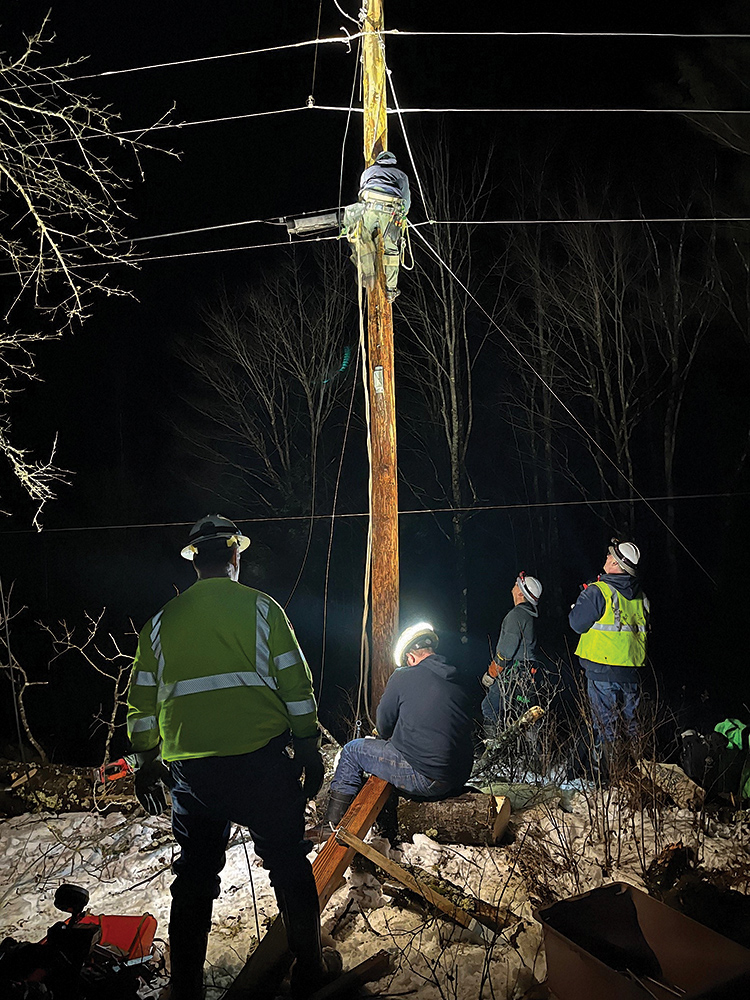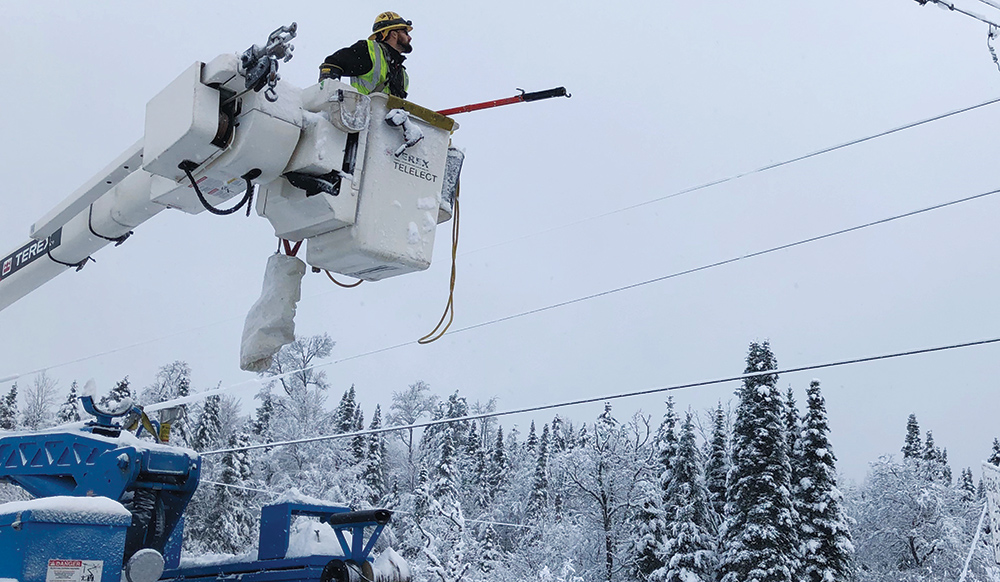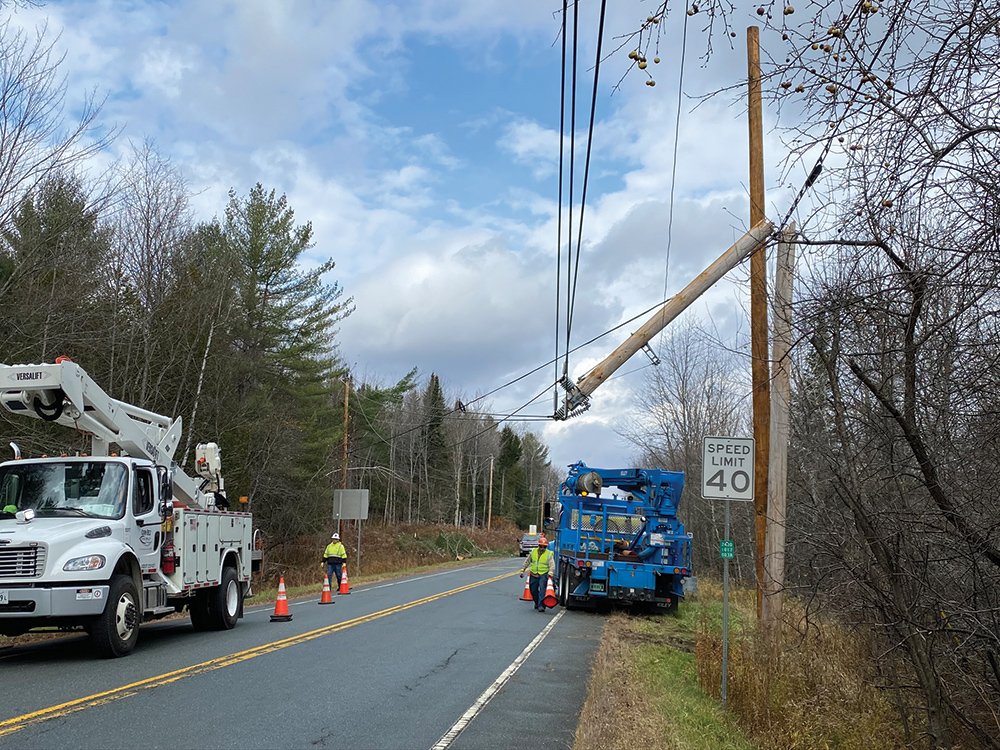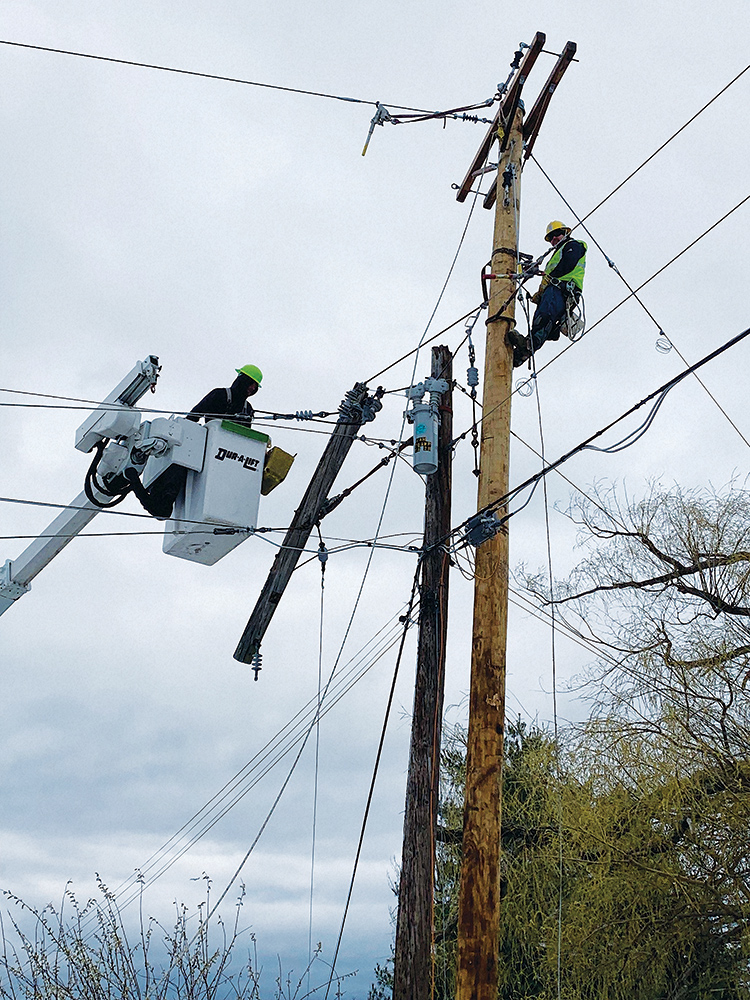Data-driven insights to guide informed, proactive investments and upgrades matter as outages caused by extreme weather increase
Across the United States, utility trucks rumble down washed-out roads and snow-covered switchbacks, racing to restore power after yet another “once-in-a-generation” weather event. But these events are no longer once in a generation, they're seasonal, expected and increasingly severe.
From ice storms in Vermont and hurricanes in Louisiana to wildfires in California and snowstorms in Texas, the effects of climate change are playing out regionally in distinct and increasingly disruptive ways. Grid operators are no longer asking if extreme weather will hit – they’re asking when, where and how bad. The scale of disruption has shifted, and so must the scale and speed of our response.
The numbers tell a sobering story. In 2024 alone, the U.S. faced 27 billion-dollar weather and climate disasters, totaling over $182 billion in damages. According to NOAA, the 1980-2020 annual average was just nine such disasters. In the last five years, the average has surged to 23 per year – a near-tripling in just a generation.
As the climate changes, so do the consequences for electric reliability. From 2000 to 2023, 80% of major U.S. power outages were caused by extreme weather. In 2022, the average American experienced 16% more disruptions than in 2013. Even as utilities invest more capital than ever before, the threats are outpacing traditional planning.
These outages come with a steep price: not just in dollars lost, but in lives, livelihoods and trust. In heat waves and winter storms, socially and economically vulnerable populations bear the brunt. When power is lost, so is access to refrigerated medicine, dialysis machines and life-saving HVAC. As a result, grid reliability isn’t only a technical issue – it’s a matter of public health, environmental justice and economic equity.
That’s why planning for grid resilience in a climate-uncertain future with clear, data-driven insights is more important than ever before. We can’t afford to miss on resilience investments. This is especially true for municipal utilities and electric cooperatives, the small but mighty providers serving 1 in 7 Americans. The decisions these utilities make today will determine whether their communities can withstand the climate impacts of tomorrow.
Resilience on the front lines of municipal and cooperative utilities
In Vermont, climate change has meant more than warmer winters. It has meant ice, wind and back-to-back storms that devastate rural infrastructure. For Vermont Electric Cooperative (VEC), a not-for-profit cooperative utility serving over 43,000 meters across eight counties, these events have become more intense and more frequent.
VEC owns and operates approximately 2,500 miles of overhead distribution lines, many running through off- road, heavily forested terrain. These conditions create persistent challenges for line maintenance, asset visibility and storm response. In the past five years alone, outages from wind and ice have surged. Trees and weather-related events now account for nearly 50% of all outage hours and roughly 30% of all outage events.
In 2024, storms Finn and Gerri dealt a one-two punch to VEC’s system. Hundreds of trees fell, and more than 60 poles were snapped, requiring specialized equipment and nearly a week of coordinated recovery. Events like these are no longer anomalies – they are the new normal. And for utilities like VEC, adapting to this reality means rethinking every aspect of resilience planning.
One of the most urgent lessons? Major storm events require two to four times the typical resource mobilization. Managing response with legacy systems, like Excel spreadsheets, is no longer feasible. That’s why VEC is building a comprehensive resilience strategy, one that blends cutting-edge technology with community-focused innovation
As part of this strategy, VEC partnered with Rhizome, a climate resilience planning platform, to bring greater visibility and intelligence into its planning workflows. Rhizome’s gridCAVA (Climate and Asset Vulnerability Assessment) platform, built specifically for municipal and cooperative utilities, provides affordable, high-resolution climate vulnerability modeling. It’s helping VEC prioritize limited investment capacity and stretch every dollar for maximum community value.
This partnership is just one piece of VEC’s forward-thinking approach. The cooperative is also embracing drone-based asset inspections through Firmatek and participating in the SOLVER project, a collaboration with Vermont Electric Power Company (VELCO) and the University of Vermont. Using LiDAR and new analytics, SOLVER helps identify vegetation risks, which is one of the largest outage drivers in the state. Coupled with gridCAVA, VEC will have unprecedented visibility into the current and future compounding risks present in their geography.
VEC is also preparing to launch its Income-Qualified Battery Program in 2025. Supported by a state grant, the program will deploy batteries in approximately 55 low- and moderate-income households, offering backup power for essential services and contributing to peak load reduction. This is resilience with equity in mind.
From modernizing its AMI systems to reducing outage reporting delays, VEC’s work reflects a larger shift across public utilities: a move from reactive recovery to proactive planning.
Smarter planning
You can’t manage what you can’t measure. That’s the core premise behind gridCAVA, Rhizome’s flagship climate vulnerability assessment platform tailored to the needs of municipal and cooperative utilities.
gridCAVA brings together weather and climate models, utility infrastructure data and social vulnerability metrics into a single, interactive planning environment. With this unified view, utilities can zoom into specific feeder lines, simulate future weather scenarios and evaluate how targeted investments – such as undergrounding or vegetation management – could improve system resilience over time.
Critically, gridCAVA doesn’t just show where systems are vulnerable, it helps determine why. By bringing asset vulnerability characteristics with geospatial climate threats, utilities can identify the most impactful upgrades. Should a line be reinforced? Buried? Paired with distributed energy resources or backup storage? These questions, once difficult to answer without costly consulting studies, can now be inexpensively explored in-house.
The platform also supports multi-hazard planning. Rather than isolating each risk – flooding, wildfire, ice – gridCAVA allows users to see how compound events could interact. For example, a heat wave might simultaneously increase demand, wildfire risk and equipment failure rates. Understanding these overlaps is critical for resilience investments.
Because it’s built on Rhizome’s Aspen platform, gridCAVA is a living system. It updates as new data is ingested, allowing utilities to iterate their plans in real time. This is especially helpful for grant applications and regulatory filings – utilities can generate visual reports and "what-if" scenarios to demonstrate the cost-benefit of proposed upgrades, without outsourcing every step.
Most importantly, gridCAVA is designed to be affordable and accessible. Many smaller utilities have historically been priced out of resilience studies. Rhizome is changing that. By streamlining and automating complex models into user-friendly interfaces and pricing them within reach, gridCAVA makes high-quality planning possible for the very organizations that need it most.
For utilities like VEC, the benefits are tangible: smarter capital planning, clearer regulatory communication and stronger trust with members.
Leading the way in a climate-uncertain future
Targeted resilience investments, guided by clear data and intelligent planning, are no longer optional – they’re essential. For municipal and cooperative utilities, the stakes are high: the future reliability of their systems, the trust of their communities and the protection of the most vulnerable among us.
Tools like gridCAVA allow utilities to move from uncertainty to action. They help leaders prepare, not just react. And by integrating equity considerations into every investment decision, these tools also help ensure that no community is left behind.
Climate change is not a distant threat. It’s here, reshaping the grid and redefining our expectations of reliability. The work being done by VEC and Rhizome shows that, with the right tools and partnerships, even small utilities can lead the way in building a smarter, stronger and more equitable energy future.

Cyril Brunner is innovation and technology leader at Vermont Electric Cooperative, a rural 43,000-meter electric cooperative in Vermont. Brunner is focused on linking electric cooperative challenges and individuals with technology solutions. He has more than a decade of experience in the utility industry and holds a degree in electrical engineering from the University of Vermont.

Mishal Thadani is the co-founder and CEO of Rhizome, a climate resilience software platform for electric utilities. Thadani has more than a decade of experience in climate resilience and regulation, and is a recipient of the Public Utilities Fortnightly 40 Under 40 and is a Clean Energy Leadership Institute Fellow.











